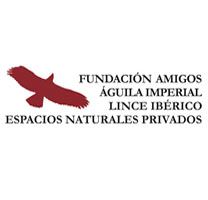About Us
Our ProjectsBACKGROUND
Every year around the world, thousands of birds of prey die due to one of the major threats to these threatened species: collision and electrocution with power lines. Many devices and systems have been developed to minimize this threat, with significant success. However, a key question always remains: where can we find the most dangerous spots where these impacts happen?
e-Faunalert APP
A tool for action
E-faunalert is a free, easy-to-use mobile application that has been created for everyone and for everywhere – from scientists to hikers, from governments and energy sector workers to the general public across the world – to help identify these dangerous spots for birds but also for other animals like mammals or reptiles. After registering and creating your profile in the app, you will be able to upload pictures and describe where electrocutions or collisions have been identified or contribute to characterize power lines in order to map potentially dangerous structures and areas. The information will be available through this website, once logged in.
A little history
2015
Beginnings
In 2015 IUCN-Med started cooperation activities with North African countries to address the conservation of raptors in the region, highlighting the threat that the electricity cables pose to birds. In this regard, several meetings and workshops were held in Spain, Morocco and Tunisia to promote practical training and knowledge exchange between experts and managers in the Mediterranean region.
2016
First Projects
In 2016 the Fundación Amigos del Águila Imperial Ibérica, el Lince Ibérico y Espacios Naturales Privados, with the support of Fundación Banco de Santander, developped the “Alerta Tendidos” project and the first “Alerta Tendidos” mobile application as a citizen science tool to raise awareness about the impacts that surface power lines can have on bird species at some locations
2017
Building Program
In 2017, a capacity building programme was launched to train key stakeholders in North Africa in the identification and mitigation of potentially dangerous power lines.
2018
Agreements
In 2018, IUCN-Med and Fundación Amigos del Águila Imperial Ibérica, el Lince Ibérico y Espacios Naturales Privados signed an agreement to foster collaboration to address biodiversity conservation. This website and the new mobile application e-faunalert is the result of this collaboration and it builds on “Alerta Tendidos” app, which has been improved and updated to make it available to a wider audience, in the Mediterranean region and beyond.
The e-faunalert app is a joint effort of the IUCN Centre for Mediterranean Cooperation (IUCN-Med) and Fundación Amigos del Águila Imperial Ibérica, el Lince Ibérico y Espacios Naturales Privados and it is funded by Mava Foundation.
The project is part of the Safe Flyways Initiative, funded by the MAVA Foundation.

Partners

IUCN, International Union for Conservation of Nature, helps the world find pragmatic solutions to our most pressing environment and development challenges by supporting scientific research; managing field projects all over the world; and bringing governments, NGOs, the UN, international conventions and companies together to develop policy, laws and best practice.
IUCN is the world’s oldest and largest global environmental organization, with more than 1,000 government and NGO member organizations, and over 13,000 volunteer scientists and experts in some 160 countries. IUCN’s work is supported by over 1,000 professional staff in 60 offices and hundreds of partners in public, NGO and private sectors around the world. IUCN’s headquarters are located in Gland, near Geneva, in Switzerland.
The IUCN Centre for Mediterranean Cooperation was opened in October 2001 with the core support of the Spanish Ministry of Agriculture, Fisheries and Environment, the regional Government of Junta de Andalucía and the Spanish Agency for International Development Cooperation (AECID). The Centre’s mission is to influence, encourage and assist Mediterranean societies to conserve and use sustainably the natural resources of the region and work with IUCN members and cooperate with all other agencies that share the objectives of the IUCN.

The Fundación Amigos del Águila Imperial Ibérica, el Lince Ibérico y Espacios Naturales Privados (Foundation of Friends of the Spanish Imperial Eagle, Iberian Lynx and Private Natural Areas) was founded in 2002 from the concern, interest and responsibility of a group of private landowners to conserve these emblematic species and others with which they share habitats. These species found in these properties some of their last refuges in the mid to late twentieth century, and the conservation of these populations allowed the beginnings of their recovery.
Since its creation, the Foundation has actively collaborated with environmental administrations to support the re-introduction of the most endangered species of Mediterranean forests fauna in their former habitats. Since 2013, the Foundation has been a Custody Entity of the territory and as such it defends and actively collaborates in conservation, making it compatible with the traditional uses of the environment and adjusting itself to the most demanding parameters of sustainable development.
The Fundación Amigos del Águila Imperial Ibérica, el Lince Ibérico y Espacios Naturales Privados is a Spanish national entity, registered in the General Registry of Foundations of the Spanish Ministry of the Environment on 15 July 2005 (published in BOE nº 190 res. 13806).
Thanks to
This project was made possible from the support of a group of stakeholders that helped us to design and implement the e-faunalert platform: Justo Martín Martín, and José Rafael Garrido López (technical advisors and photos); Ángel Arredondo Acero, Francisco Guil and Cecilia Saura Drago (technical advisors) and Daniel Burón (photos).
